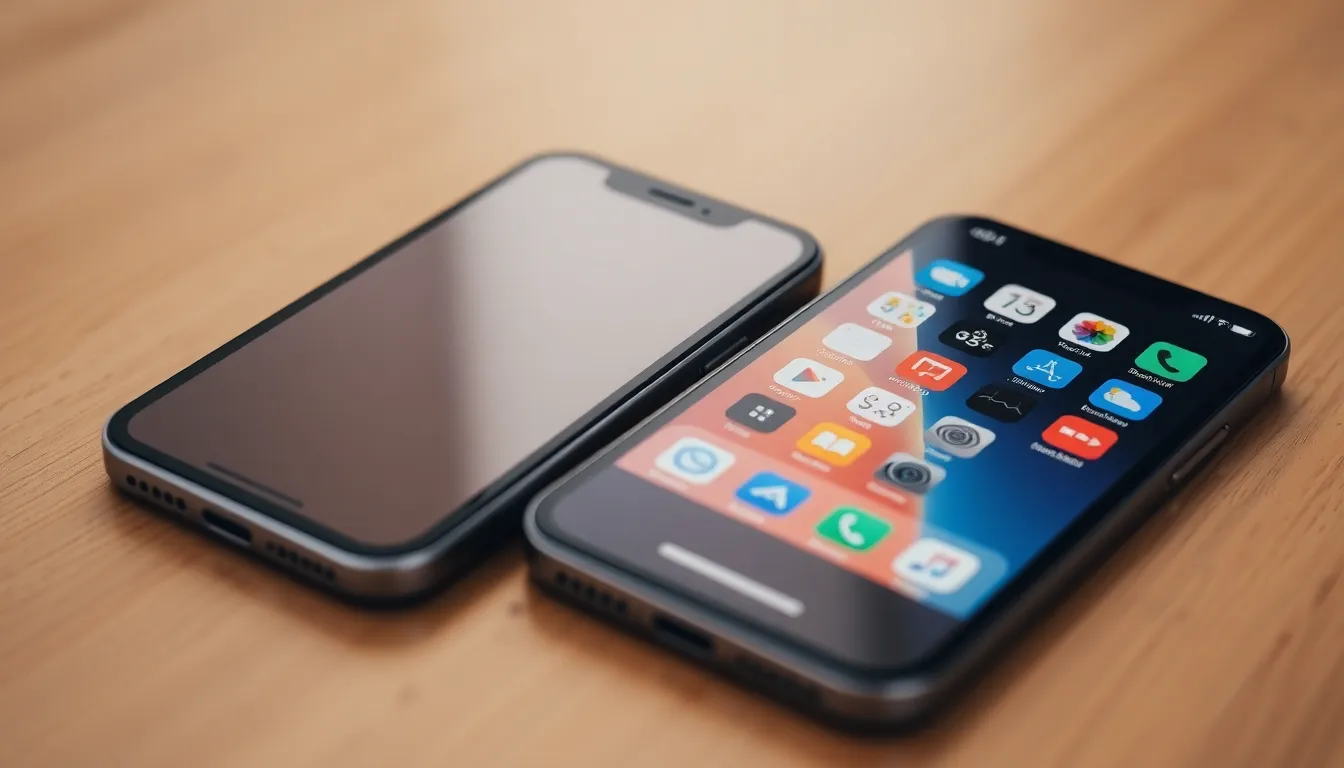Ever wondered why your iPhone suddenly declares it’s out of memory when you’re just trying to capture that perfect sunset? iPhone memory isn’t just a techy term; it’s the lifeblood of your device, the secret sauce that keeps your apps running smoothly and your selfies looking fabulous.
Table of Contents
ToggleWhat Is iPhone Memory?
iPhone memory refers to the storage capacity available on an iPhone device. This storage is essential for saving apps, photos, videos, and other user data. Two primary types of memory exist: RAM and internal storage. RAM temporarily holds data that the processor needs for active tasks, while internal storage provides long-term space for files and applications.
Capacity varies across different iPhone models. Options typically include 64 GB, 128 GB, 256 GB, and some higher-end models even offer 512 GB or 1 TB. Users choose a capacity based on their app usage and multimedia needs. For instance, photography enthusiasts who take numerous high-resolution photos may require larger storage.
Memory limits impact device performance directly. Insufficient storage can lead to issues like slow app responses and difficulties in updating software. A lack of available memory also prevents users from taking photos or downloading new apps. When the storage reaches its limit, users might experience notifications urging them to free up space.
Managing memory effectively enhances the overall iPhone experience. Users can regularly review and delete unused apps or large files. Cloud services also offer supplemental storage solutions, allowing users to save files without occupying device memory. Regularly backing up data ensures that important information is not lost when freeing up memory.
Understanding iPhone memory helps optimize device performance and usability. It influences app efficiency and user satisfaction, making it a critical aspect of iPhone ownership.
Types of iPhone Memory

iPhone memory primarily consists of two types: internal memory and RAM. Understanding these types is key to optimizing device performance.
Internal Memory
Internal memory refers to the storage capacity available for saving apps, photos, videos, and files. It varies across iPhone models, typically ranging from 64 GB to 1 TB. Users must assess their app usage and multimedia needs when selecting an appropriate capacity. Insufficient internal memory can hinder app performance, slow down the device, and limit the ability to update software. Managing internal memory effectively enhances user experience. Strategies include deleting unused apps, clearing large files, and offloading content to cloud storage solutions.
RAM
RAM is crucial for a device’s speed and efficiency. This type of memory temporarily stores data for active tasks, enabling seamless multitasking. Various iPhone models include different amounts of RAM, generally ranging from 3 GB to 6 GB. More RAM improves overall performance, allowing apps to run smoothly and switch quickly. When RAM is limited, users may experience slow response times and stuttering during app use. Upgrading to newer models typically provides increased RAM, enhancing the capabilities for demanding tasks and applications.
How iPhone Memory Affects Performance
iPhone memory significantly impacts overall performance. The storage capacity directly influences how well the device operates.
Storage Capacity
Storage capacity refers to the available space for apps, photos, and data. Users choose from options typically ranging from 64 GB to 1 TB. Insufficient storage capacity restricts the number of apps and multimedia files. For instance, a user with only 64 GB may face limits when installing large applications or saving numerous photos. Regularly managing this storage through deleting unused apps or large files prevents performance degradation. Utilizing cloud storage offers additional space and helps maintain speed and functionality. Effective management of storage capacity ensures the iPhone runs efficiently, providing a smooth user experience.
Speed and Efficiency
Speed and efficiency depend heavily on RAM and storage availability. Multitasking becomes challenging when RAM is limited; smoother transitions occur with 3 GB to 6 GB of RAM. Applications load faster with adequate RAM, enhancing user satisfaction. When memory is insufficient, users may encounter delays and stuttering. The ability to manage multiple applications relies on available RAM. Users experience improved functionality and responsiveness with newer models featuring upgraded RAM capacities. Efficient memory management strategies ensure optimal performance, allowing users to navigate their devices seamlessly.
Managing iPhone Memory
Effective management of iPhone memory directly influences the device’s performance. Regular attention to storage helps prevent slowdowns and ensures smooth operation.
Tips for Optimizing Storage
Delete unused apps regularly to free up space. Offload large files such as videos and photos by transferring them to cloud services. Clear browser caches and temporary files to reclaim additional storage. Utilize iCloud for automatic backups, which can help manage local storage. Uninstall apps that are rarely used, especially those consuming high amounts of RAM. Monitor downloads and remove unneeded documents. These strategies collectively enhance storage capacity and improve device functionality.
Tools for Checking Memory Usage
Apple’s built-in settings provide insights into memory usage. By navigating to Settings > General > iPhone Storage, users can see a detailed breakdown of used and available storage. Third-party apps like PhoneClean or Disk Doctor offer additional analysis and optimization features. These tools help identify large apps and files, enabling users to make informed decisions. Utilizing these options can streamline the memory management process and enhance overall performance.
Understanding iPhone memory is vital for anyone looking to optimize their device’s performance. With the right management strategies in place users can ensure their iPhones run smoothly and efficiently.
By regularly reviewing storage and utilizing cloud services users can avoid the pitfalls of insufficient memory. Keeping an eye on RAM and internal storage helps maintain speed and enhances the overall user experience.
In a world where smartphones are essential for daily tasks effective memory management can make all the difference. Prioritizing memory optimization not only improves device functionality but also enriches the user’s interaction with their iPhone.






